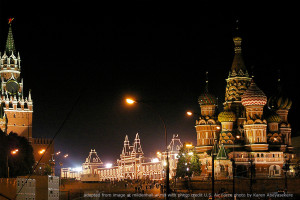William Hill: “Comment on Keith Gessen’s ‘The Russia Hands'”

Subject: Comment on Keith Gessen’s “The Russia Hands”
Date: Tue, 8 May 2018
From: William Hill <williamhhill@gmail.com>
[William Hill is Professor of National Security Strategy, National War College, Washington D.C. and a retired Foreign Service officer. Was head of the OSCE Mission to Moldova]
Thanks for flagging this piece early in the week. I suppose I would have found it eventually through the countless other media sources I peruse (including my own NYT subscription), but still nice to see here.
I’ve always considered Gessen an articulate, interesting writer, but this article is a prime example of how compelling journalism is not always good analysis.
First of all, on Nastya Rybka. I don’t recall whether you transmitted the Navalnyi video of late winter (I may have been traveling or just missed it), but the mention of Toria Nuland in the video was not necessarily the most interesting aspect. The possible link of Manafort (and the Trump campaign) to the Kremlin via Deripaska and Prikhodko jumps out of the piece for any conspiracy-minded viewer (and for many who are not).
On the “Russia hands” in the US government, I find the article somewhat limited and unbalanced. Toria Nuland and Dan Fried played indisputably important roles for extended periods. However, it seems to me too facile and in the end inaccurate to set them up as a Russophobic old guard against a crew of younger, more sensible specialists. First of all, there are many other long-serving Russia specialists in the US government, whom Gessen does not mention, who also played continuing, important roles in US-Russia relations from the last decades of the Cold War to the present day. For example, there come to mind individuals such as Jim Collins, Sandy Vershbow, Bill Burns, Nick Burns, John Beyrle, John Tefft, Steve Pifer, David Kramer, and many, many others. Second, there was (and is) hardly unanimity of opinion among these and other “Russia hands,” let alone among the numerous political leaders and institutions that contribute to the making of American foreign policy. The story of how the US relationship with Russia improved in the late 1980s, and then gradually worsened during the present century is much more complex, and depends upon many more actors and variables, than those presented in a portrait of a small number of older and younger Russia experts in Washington DC.
Gessen’s political science-literature dichotomy also seems inadequate. A large number of the older Russia hands in the US government learned Russian and about Russia by studying language, history, or other subjects as part of the old CIEE and IREX exchanges, or by working on the USIA exhibits in the Soviet Union. So most of these experts — not just Nuland and Fried — got some direct education on the ground in the USSR. Experts with such background abound in government and academia in the US, although they (perhaps I should say we) are gradually dying out. The US military foreign area officer program has also produced numerous Russia area experts (Peter Zwack is one), and continues to do so.
As for Gessen’s analysis, US administrations from that of George H.W. Bush to the present one have indubitably made miscalculations and mistakes in conducting relations with Russia. However, one also needs to ask whether Russian actions have been consistently constructive and conducive to improving relations. Perhaps the greatest source of discord between Moscow and Washington has been the status of the so-called “near abroad,” that is, the independent countries that were formerly republics of the USSR. I would argue that the US (and western) position has generally been that these countries should be fully sovereign and independent. Russia on the other hand, in the 2008 words of then President Medvedev, has seen these countries as part of a Russian sphere of “privileged interest.” It seems to me that if one is to criticize US actions in these countries (such as those of Toria Nuland in Ukraine), one also needs to examine to what extent Russian policies and actions after 1992 have contributed to continuing resentment and hostility, rather than reconciliation in the newly independent, former Soviet republics.
I tend to agree with Gessen that US-Russia relations have gotten to a dangerously low point at the present time. However, I would argue that for improvement more than just an American change of perception and course is necessary. Moscow also needs to examine the international perception and consequences of some of its policies and actions, and accept that not all of the international opprobrium it has received is simply the result of deep and widespread Russophobia. Gessen argues that a more sober, modest, balanced US approach is needed to reverse the deterioration of US-Russian relations and to lessen the danger of unwanted hostilities. Without disputing that point with him, my reading of the media and official statements in Russia leads me to conclude that more moderation, balance, self-examination, and restraint is also needed from Moscow. In the end, it seems to me an illusion to think that we will solve the sad state of US-Russia relations simply by finding different US experts who will “get Russia right.” There is, unfortunately, more to it than that.
